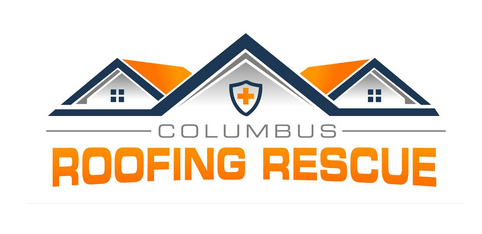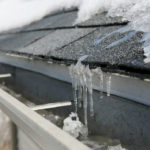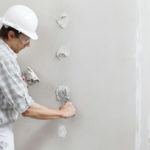
How to Get Rid of Termites
Termites are small, white insects that feed on wood and cellulose materials, such as paper, cardboard, and furniture. They are often mistaken for ants, but unlike ants, termites have straight antennae, a uniform waist, and two pairs of wings that are equal in size. Termites feed silently and can cause significant damage to your home before you even notice. Here are some signs of a termite infestation that you should look out for:
1. Mud Tubes: Termites build and form mud tubes to cover and protect themselves from predators and to maintain a moist environment. These tubes look like small tunnels that run along your home’s foundation, walls, and other wooden structures.

2. Hollow Wood: Termites eat wood from the inside out, producing a thin layer of wood on the surface. If you tap on a wooden structure and it sounds hollow, it could be a sign of a termite infestation.
3. Swarming: Termites swarm when they are ready to mate and start a new colony. Swarms usually occur in the spring and early summer and are often mistaken for flying ants.
If you notice any of these signs, it’s very important to take action immediately. Ignoring a termite infestation can lead to costly damage and repairs. The following sections discuss the different types of termites you may encounter.
Types of Termites
There are basically three main types of termites: subterranean, dry wood, and damp wood. Each type has its characteristics, behavior, and habitat. Understanding the type of termite you’re dealing with can help you choose the most effective treatment. Here’s a brief overview of each type:
1. Subterranean Termites: These termites live in the soil and form mud tubes to travel to and from their food source. They’re the most common type of termite in the United States and can cause extensive damage to your home.
2. Drywood Termites: These termites live in dry wood and don’t require contact with the soil. They are common in the southern and western parts of the US and can be difficult to detect.
3. Dampwood Termites: These termites live in damp wood and are less common than subterranean and drywood termites. They are mostly found in coastal regions and areas with high humidity.
Now that you understand the different types of termites, let’s discuss the various ways to eliminate them.
Chemical Treatments for Termite Control

Chemical treatments are the most commonly used method for termite control. These treatments involve applying a pesticide to the soil around your home or the infested wood. There are two main types of chemical treatments: liquid termiticides and bait systems.
1. Liquid Termiticides: These treatments involve applying a liquid pesticide to the dirt around the base of your home. The pesticide creates a barrier that stops termites from entering your home. Liquid termiticides can also be injected directly into the infested wood.
2. Bait Systems: Bait systems involve placing bait stations around your home that contain a pesticide. Termites are attracted to the bait and carry it back to their colony, eventually killing the entire colony.
Chemical treatments are effective in eliminating termites, but they can also be harmful to humans and pets. It’s essential to follow the instructions carefully and hire a professional if you’re uncomfortable using pesticides.
Natural Remedies for Termite Control
If you’re looking for a more natural approach to termite control, there are several remedies that you can try. These remedies are generally safe for humans and pets and can be combined with other methods.
1. Orange Oil: Orange oil is a natural insecticide that is extracted from orange peels, and it can be applied directly to the infested wood to kill termites.
2. Vinegar: Vinegar is another natural insecticide that can be used to kill termites. Mix equal parts of vinegar and water and spray it directly on the infested wood.
3. Diatomaceous Earth: Diatomaceous earth is a type of fossilized algae that can be used to kill termites. It works by dehydrating the termites, eventually killing them.
While these natural remedies can be very effective, they may not eliminate the entire colony, and it’s important to use them in combination with other methods for the best results.
Physical Barriers for Termite Control
Physical barriers are another effective method for termite control. These barriers prevent termites from entering your home and can be installed during construction or added later. Here are some common types of physical barriers:
1. Stainless Steel Mesh: Stainless steel mesh can be installed around pipes and other openings in your home to prevent termites from entering.
2. Concrete Slabs: Concrete slabs can be poured around your home’s foundation to create a barrier that termites cannot penetrate.
3. Metal Termite Shields: Metal termite shields can be installed between the foundation of your home and the wooden structures to prevent termites from accessing the wood.
Physical barriers are a long-term solution to termite control and can effectively prevent future infestations.
Professional Termite Control Services
If you have a severe termite infestation or are uncomfortable using DIY methods, hiring a professional pest control service is best. Professional services have the experience, equipment, and knowledge to eliminate termites and prevent future infestations effectively. Here are some common types of professional termite control services:
1. Fumigation: Fumigation involves sealing your home and filling it with a gas that kills termites. This method eliminates the entire colony but can be expensive and require you to vacate your home for a few days.
2. Heat Treatment: Heat treatment involves heating your home to a temperature that kills termites. This method is effective in eliminating termites but can also be expensive.
3. Chemical Treatments: Professional pest control services use specialized equipment and chemicals to eliminate termites. They can also provide ongoing treatments to prevent future infestations.
Professional termite control services can be expensive but are often the most effective method for eliminating termites and preventing future infestations.
Preventing Future Termite Infestations

Preventing future termite infestations is key to keeping your home safe. Here are some tips for preventing termites from entering your home:
1. Remove Wood Debris: Termites are attracted to wood debris, such as fallen trees, branches, and stumps. Remove any wood debris from your property to prevent termites from entering.
2. Seal Cracks and Openings: Termites can enter your home through small cracks and openings. Seal any cracks or openings around your home to prevent them from entering.
3. Monitor Moisture Levels: Termites thrive in moist environments. Monitor the moisture levels in and around your home and immediately fix any leaks or water damage.
4. Regular Inspections: Regular inspections by a professional pest control service can help you detect and prevent termite infestations before they cause significant damage.
Common Mistakes to Avoid When Trying to Eliminate Termites
Eliminating termites can be a challenging task, and there are several common mistakes that homeowners make. Here are some mistakes to avoid:
1. Ignoring the Problem: Ignoring a termite infestation can lead to costly damage and repairs. Take action immediately if you suspect a termite infestation.
2. Using DIY Methods Incorrectly: DIY methods can be effective, but it’s important to follow the instructions carefully and use them in combination with other methods.
3. Not Hiring a Professional: Severe termite infestations require professional treatment. Feel free to hire a professional if you’re uncomfortable using DIY methods.
Conclusion and Final Thoughts
Termites can cause significant damage to your home if left untreated. It’s important to take action immediately if you suspect a termite infestation. Several effective methods for eliminating termites include chemical treatments, natural remedies, physical barriers, and professional pest control services. Preventing future infestations is key to keeping your home safe. Remove wood debris, seal cracks and openings, monitor moisture levels, and schedule regular inspections. Following these tips and avoiding common mistakes can effectively eliminate termites and keep your home safe for years.



